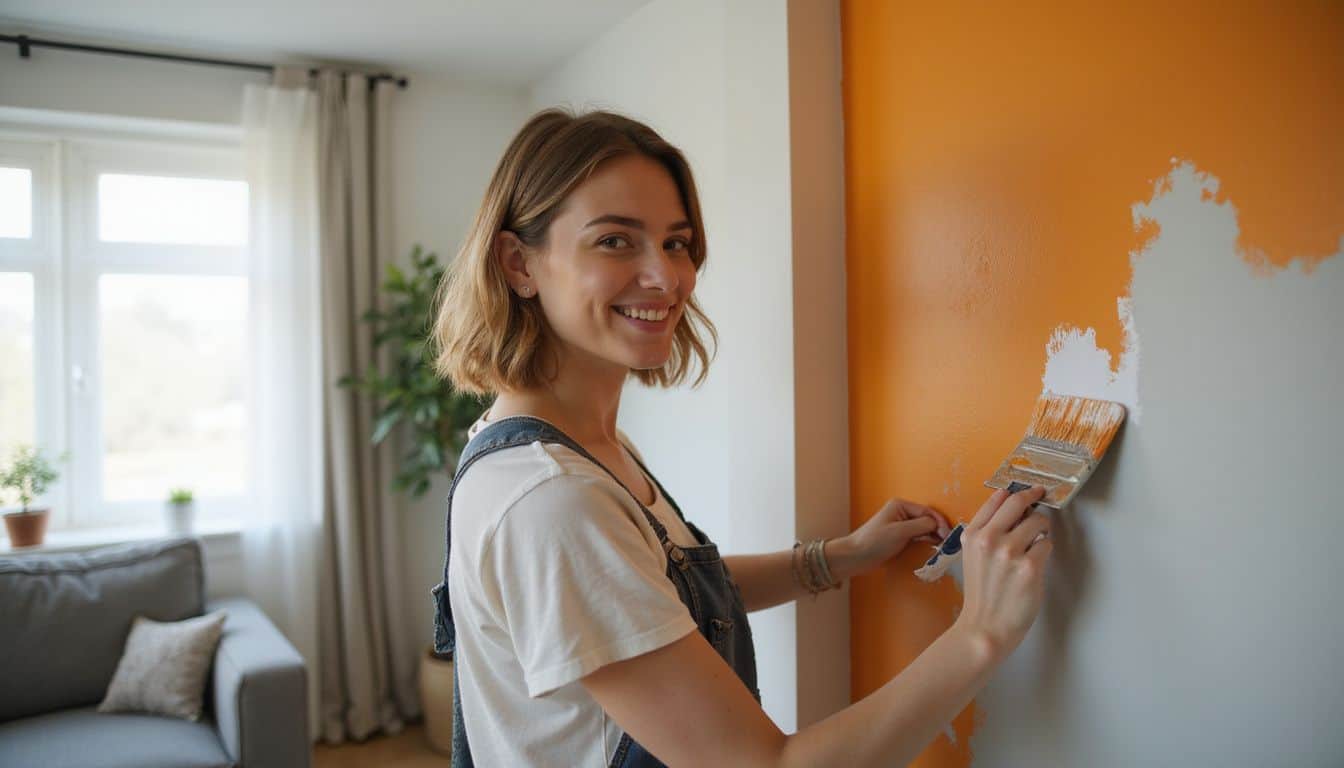Tired of looking at dull walls, old cabinets, or dated doorknobs around your home? Studies show that finishing diy home projects for beginners boosts pride and lifts your mood. This list gives you easy upgrades like room painting, ceiling fan installation, and smart thermostats anyone can tackle in a day or two.
Keep reading to find simple ideas you’ll want to start today!
Key Takeaways
Small, easy DIY tasks—like painting a room or swapping cabinet handles—typically cost just $50 to $220; these simple upgrades help lift your mood and prepare you for larger projects down the road.
Installing a smart thermostat costs roughly $100, takes less than an hour, and quickly lowers your monthly energy bills, effectively paying its own cost back in no time.
Most starter projects only require common household tools—like a screwdriver, hammer, and measuring tape—so you won’t need pricey gear to get things done.
Quick weekend ideas, such as hanging picture galleries or making wooden bathtub trays, usually take anywhere from a half-hour to a few hours of your time.
Basic home maintenance jobs—like sealing marble countertops or repairing leaky faucets—can easily save you hundreds, compared to how much pros would charge.
Table of Contents
Tips for Starting DIY Home Projects
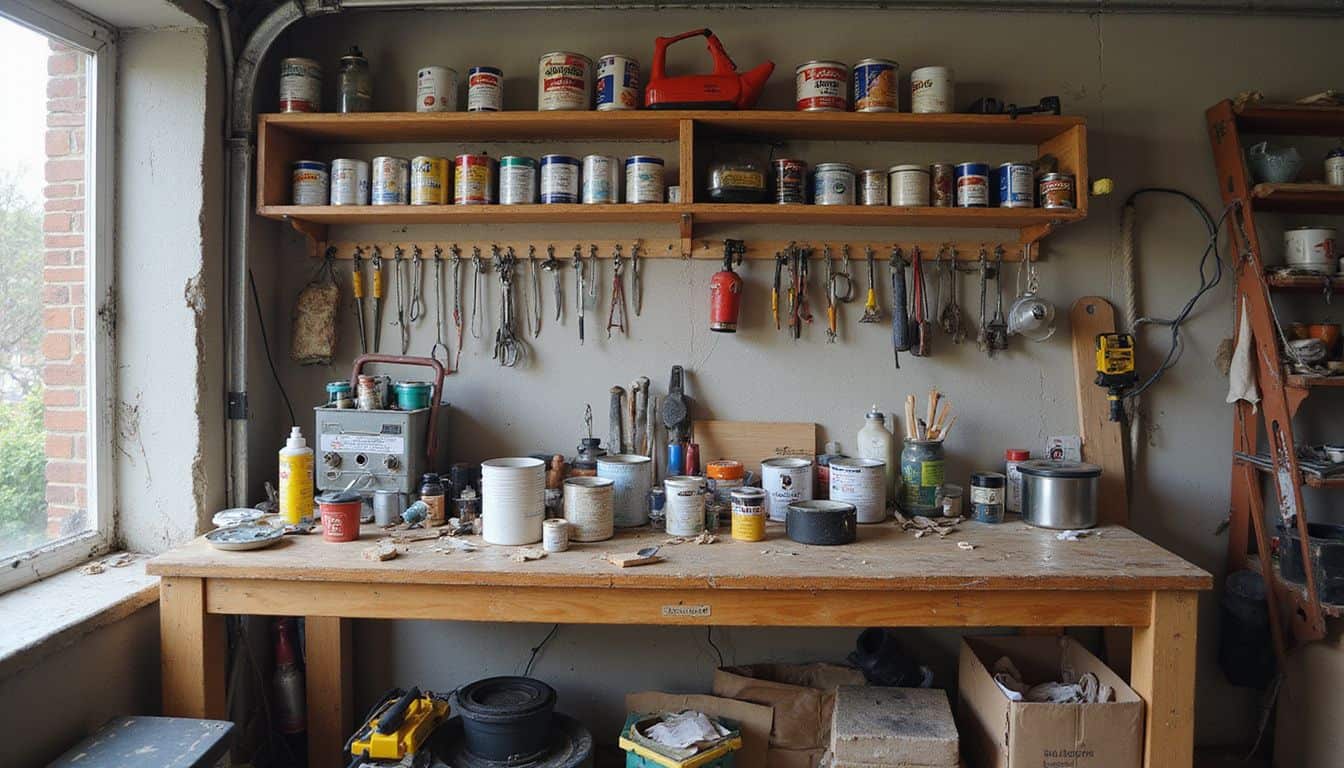 DIY home projects need proper planning and the right gear to succeed. You can make your first projects easier by learning basic skills and picking tasks that match your current abilities.
DIY home projects need proper planning and the right gear to succeed. You can make your first projects easier by learning basic skills and picking tasks that match your current abilities.
Start with small, manageable projects
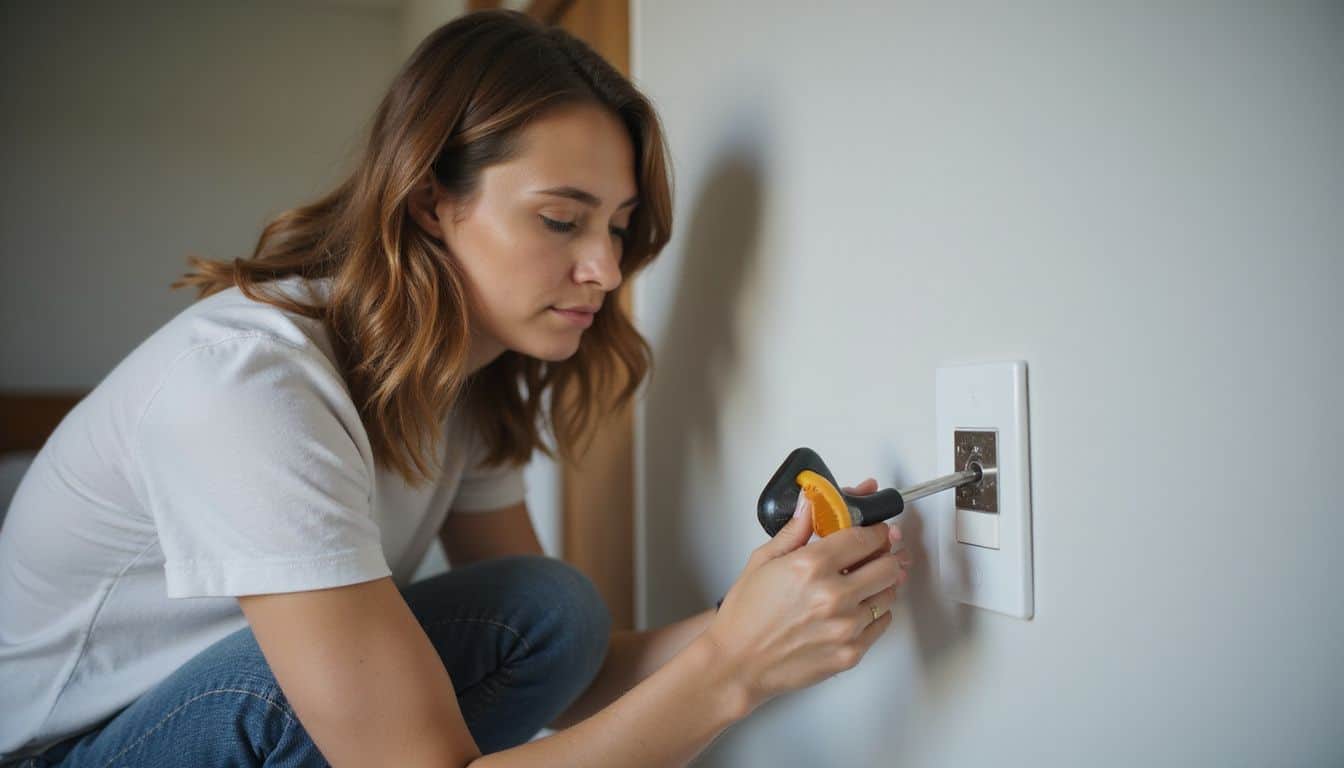
Starting small with home projects builds your confidence without causing stress. At first, I tackled easy tasks—painting an accent wall or swapping out cabinet knobs. Successfully completing these smaller improvements encouraged me to move onto bigger, more challenging projects later.
Choose one project, and stick to it, to keep from getting overwhelmed—especially in tricky areas like the crawlspace. Beginners can easily install a dimmer switch or replace bathtub caulking before moving to tougher jobs.
The secret to DIY success is building skills through small victories before attempting major renovations.
Using the right tools makes each job simpler. You won’t need anything fancy, like a nail gun; just having a solid screwdriver set and hammer is enough for most novice projects. Many women discover finishing smaller home upgrades creates enthusiasm to move onto larger DIY home projects.
Taking this gradual route allows you to slowly build useful handyman skills, making home improvement approachable, rewarding, and enjoyable.
Gather the right tools and materials
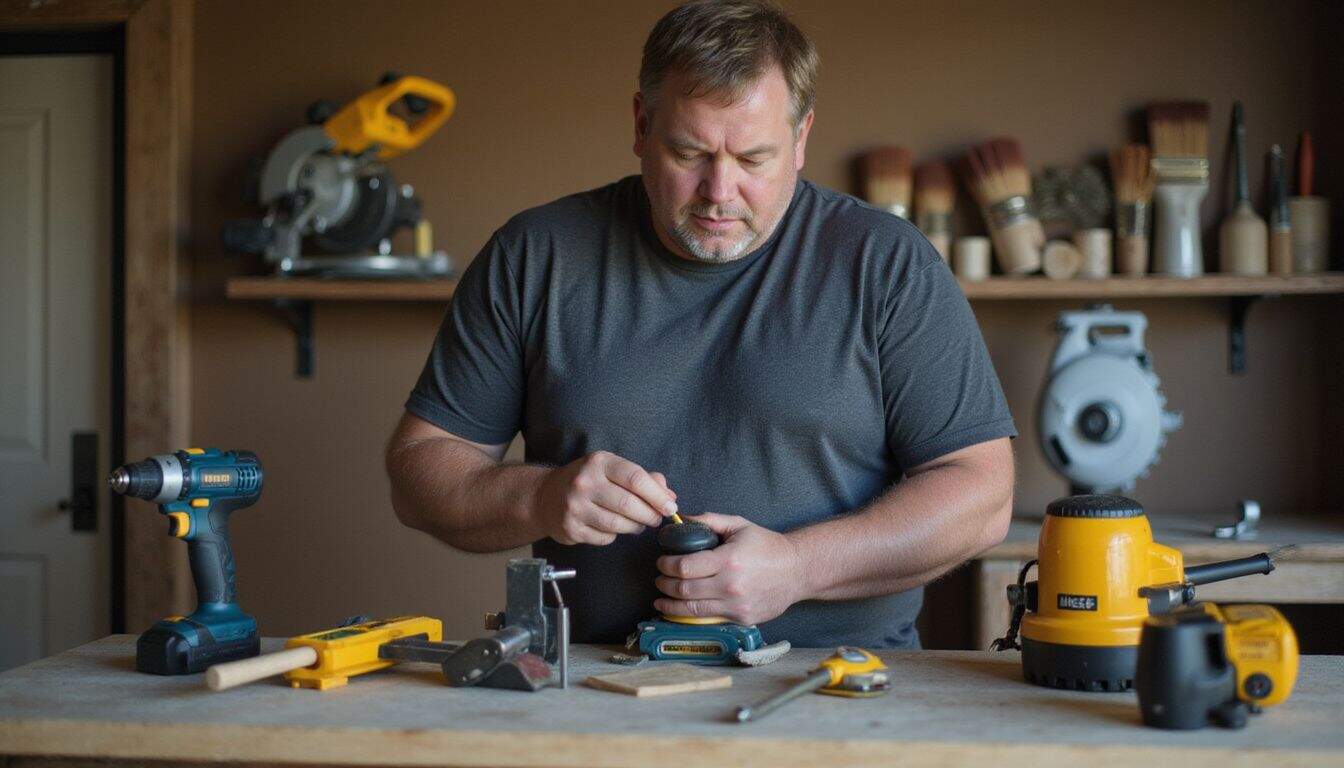
Having the right tools for DIY projects makes them simpler, faster, and genuinely enjoyable. Prepare your equipment beforehand—you’ll skip unnecessary stress and finish smoothly. Here’s a handy checklist of items to keep close:
- A sturdy hammer and a set of nails come in handy for hanging pictures and completing minor woodworking jobs around the house.
- A reliable drill makes quick work of drilling holes or securing screws into different surfaces.
- The Dewalt orbital sander easily smooths rough edges, preparing your surfaces for painting or staining.
- A spirit level ensures shelves, pictures, or cabinets stay straight and balanced on your wall.
- A ratchet screwdriver gives stronger grip and better control compared to typical screwdrivers—especially useful in tight spots.
- A voltage tester lets you safely handle electrical tasks, alerting you right away if a wire or socket carries power.
- A caulk gun neatly seals gaps around tubs, sinks, windows, and doors, keeping moisture out and protecting surfaces from damage.
- A stud finder helps quickly locate wooden beams behind drywall, providing a secure anchor for mounting heavy items safely.
- A Kreg jig easily creates neat pockets to join wooden boards securely without leaving any visible screws.
- A miter saw accurately slices wood at precise angles—ideal for trim pieces, frames, and baseboards.
- Paint brushes of different sizes handle minor touch-ups as well as larger walls, ceilings, and surfaces quickly and smoothly.
- A circular saw neatly cuts straight lines through lumber to create shelves and other woodworking projects easily at home.
Plan before you begin
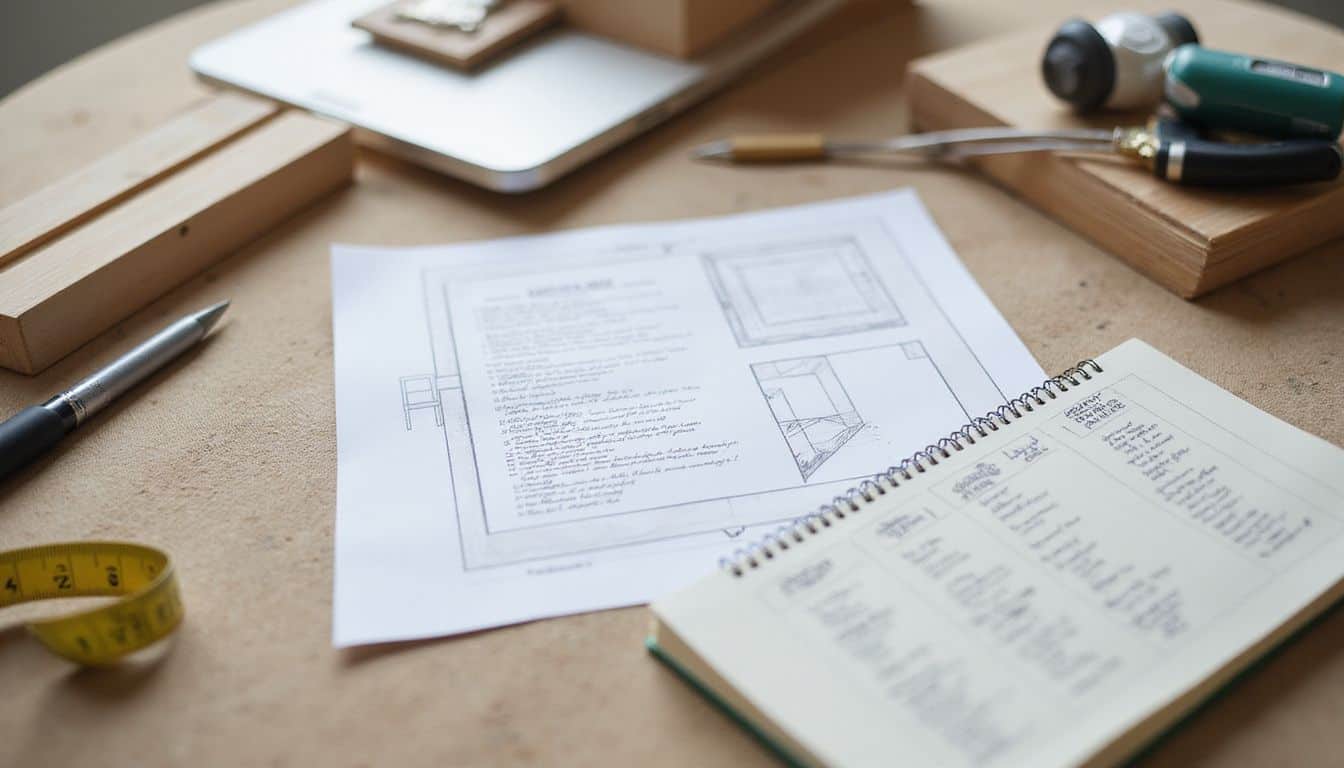
Proper planning saves you time, money, and headaches on your DIY home projects. I learned this the hard way, after rushing to paint my living room without careful prep—and making a mess of things.
Now, I sketch out my ideas first, list all needed supplies, and set realistic deadlines. Good preparation means shopping during slow store hours and setting up your workspace ahead of time.
Most home-improvement mistakes happen because people skip these steps. So, grab a notebook, settle in, and outline every stage clearly. This little habit cuts down stress and helps you avoid repeated trips to the store.
Create a clear checklist that covers all the tools, materials, and supplies you’ll need. I always double-check measurements before buying anything for home upgrades. Planning carefully also includes checking online for simple, step-by-step guides.
Plenty of free tutorials exist for common home improvements like painting rooms, laying flooring, or basic woodworking. Later, you’ll feel grateful you planned things carefully before picking up a hammer or paintbrush.
Easy DIY Home Projects for Beginners

DIY home projects can transform your space without breaking the bank. These simple upgrades will boost your confidence and skills for bigger projects later.
Paint a room or accent wall
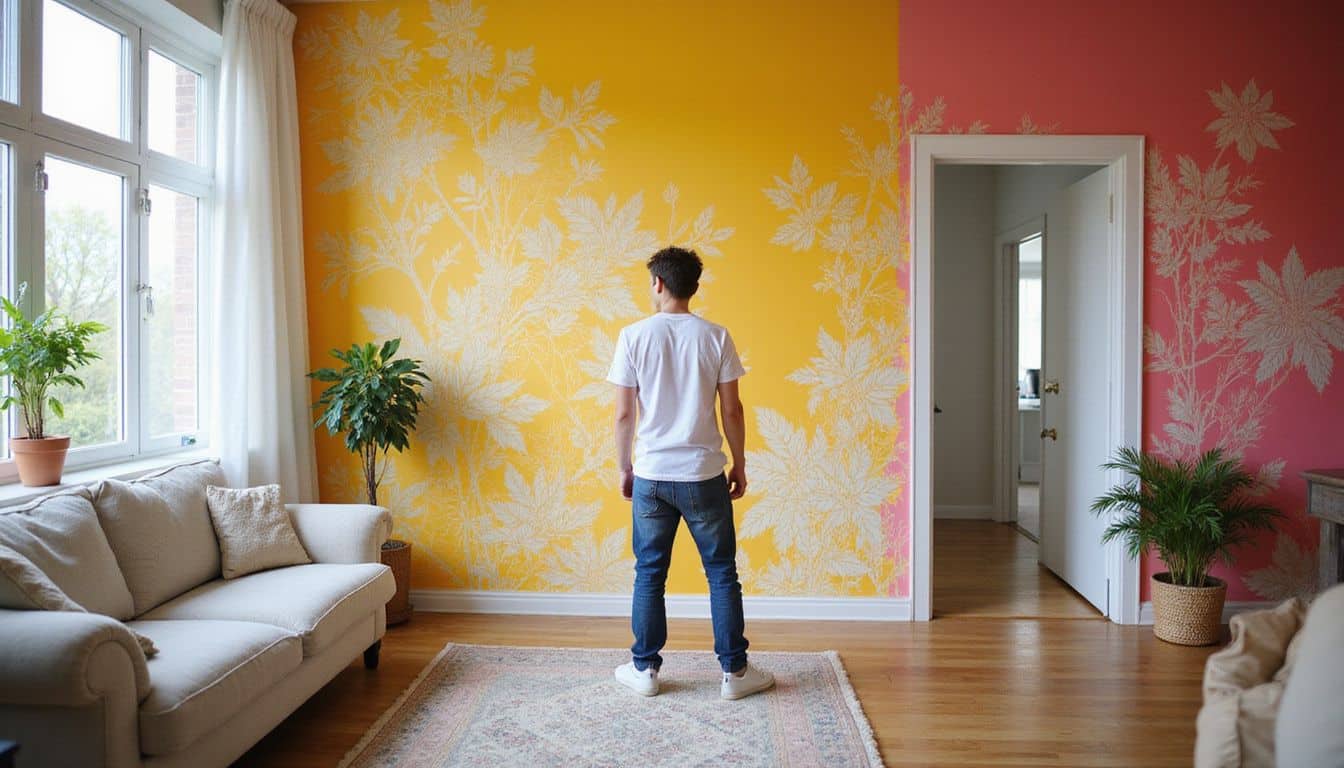
Painting a room gives you the best value for your money in home improvements. With just around $100, you can refresh bland kitchen cabinets, giving them style and color. I painted my cabinets last month, and my friends were amazed at the transformation! A fresh wall color also brightens a room, changing the whole atmosphere without huge costs.
Vibrant colors bring life to accent walls, while softer, neutral shades create space and openness.
Paint is the quickest way to fall in love with your home again.
Have fun experimenting with unique wall styles like stencils or murals. These easy techniques add personality and flair, letting your own taste shine through. Basic supplies—brushes, rollers, painter’s tape, and drop cloths—are all that you’ll need to tackle the project.
Next, we’ll cover how simple it is to create canvas art that perfectly matches your freshly painted space.
Create DIY abstract canvas art
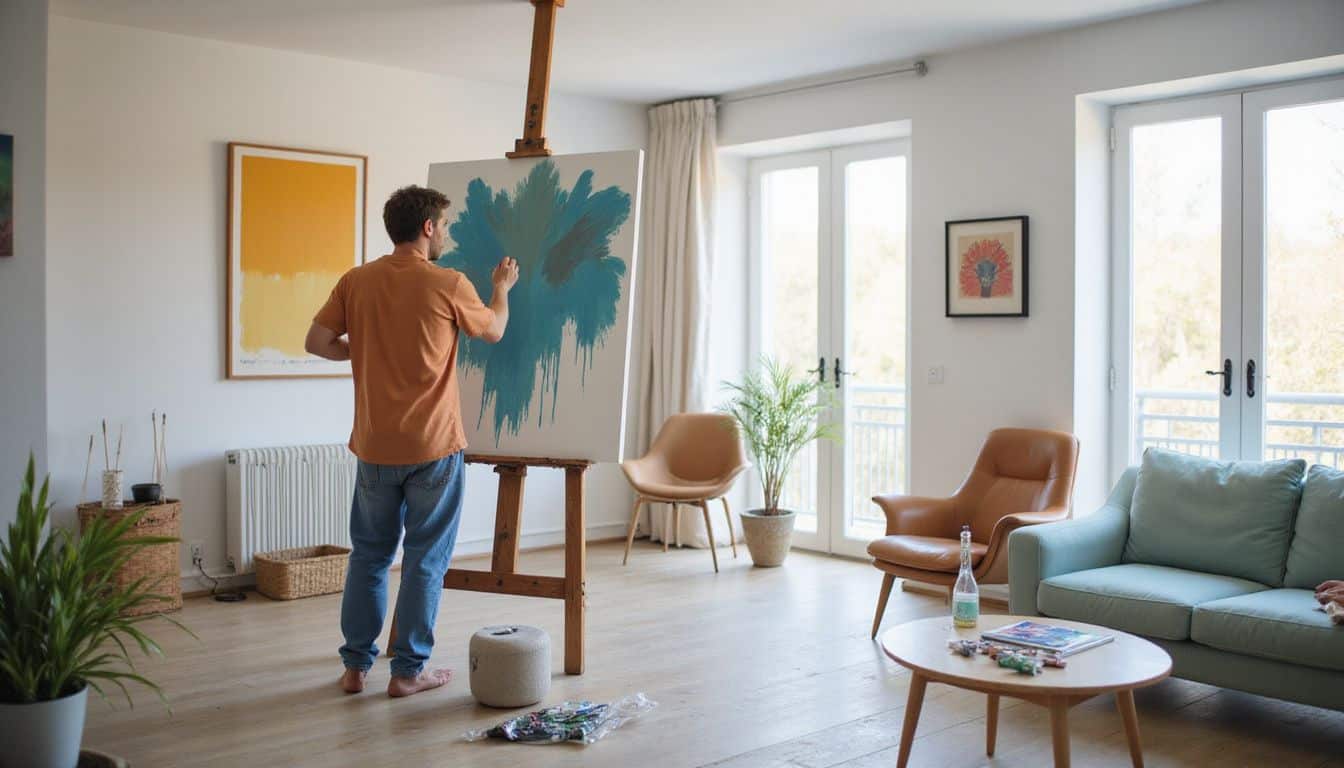
Once you’ve brightened up your room with new colors, creating custom wall art can add even more personality. DIY abstract canvas art only takes about a day, making it great for beginners.
You don’t need special artistic talents to produce appealing pieces that reflect your taste and personality.
Pick up some old frames, and cover the surface using gesso or primer as a base coat. Try using mid-grade acrylic paints—they offer quality results without much expense. Your finished designs can blend nicely into an easygoing room, especially those with Mid-Century-Modern vibes.
The real fun comes from adding your personal flair and saving money at the same time. Something you crafted yourself sparks conversations anytime friends drop by. And the flexibility is great—you can easily choose new colors and designs to match seasons or moods, all without overspending.
Replace outdated cabinet hardware

Switching out your cabinet pulls and knobs is a quick, affordable way to update your kitchen or bathroom. It usually costs around $50 to $220, depending on how many pieces you replace and the tools you might need to buy.
Many women find this project simple enough to tackle on their own within just a few hours—no hired help needed. New hardware instantly gives old cabinets a stylish lift, freshening your space at a fraction of the cost for a full renovation.
Before starting, paint the cabinets first to keep your new hardware clean and paint-free. You’ll likely need a screwdriver, a measuring tape, and maybe a drill if your new hardware size doesn’t match the old holes.
Carefully count each cabinet door and drawer so you buy exactly enough knobs or pulls. This easy, cost-effective upgrade can significantly improve your home’s look and requires only basic DIY know-how.
Install a smart thermostat
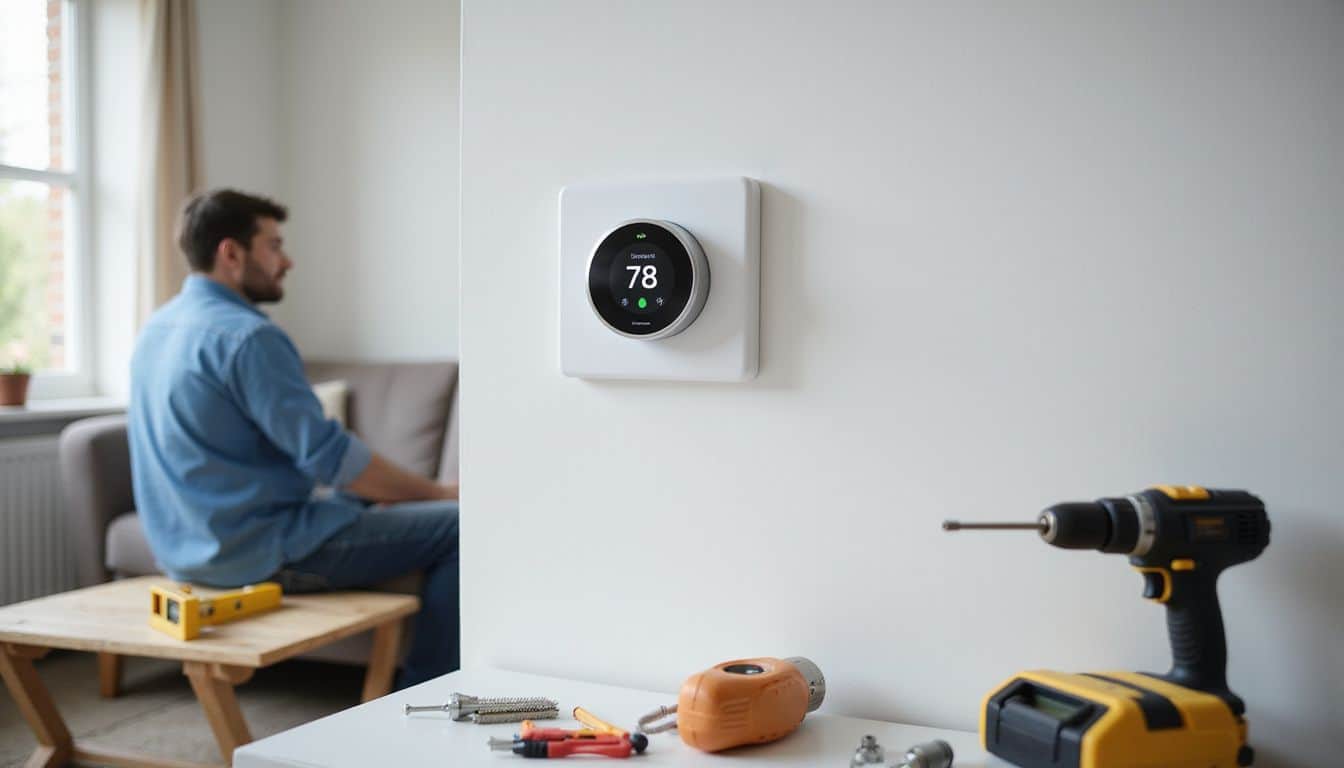
Smart thermostats are an affordable upgrade that quickly pays for itself. For around $100—or even less after rebates—you can easily transform your home’s temperature controls. These intuitive devices learn your daily routine, automatically adjusting your heating or cooling to reduce waste.
Many women notice lower monthly utility bills right after completing this simple DIY task. You’ll just need basic tools: screwdrivers, a drill, a level, and a voltage tester.
Most beginners can finish installation within an hour. First, shut off power to your existing thermostat via the breaker box. Then remove the old thermostat, carefully connecting each labeled wire onto your new smart device.
After mounting and powering it up, you’re all set to control temperature remotely from your phone—ideal for warming your house before returning home or helping to keep your home cool efficiently during hot summer months.
A smart thermostat isn’t just a modern convenience—it’s like having a personal energy assistant that works while you sleep.
Weekend DIY Home Projects
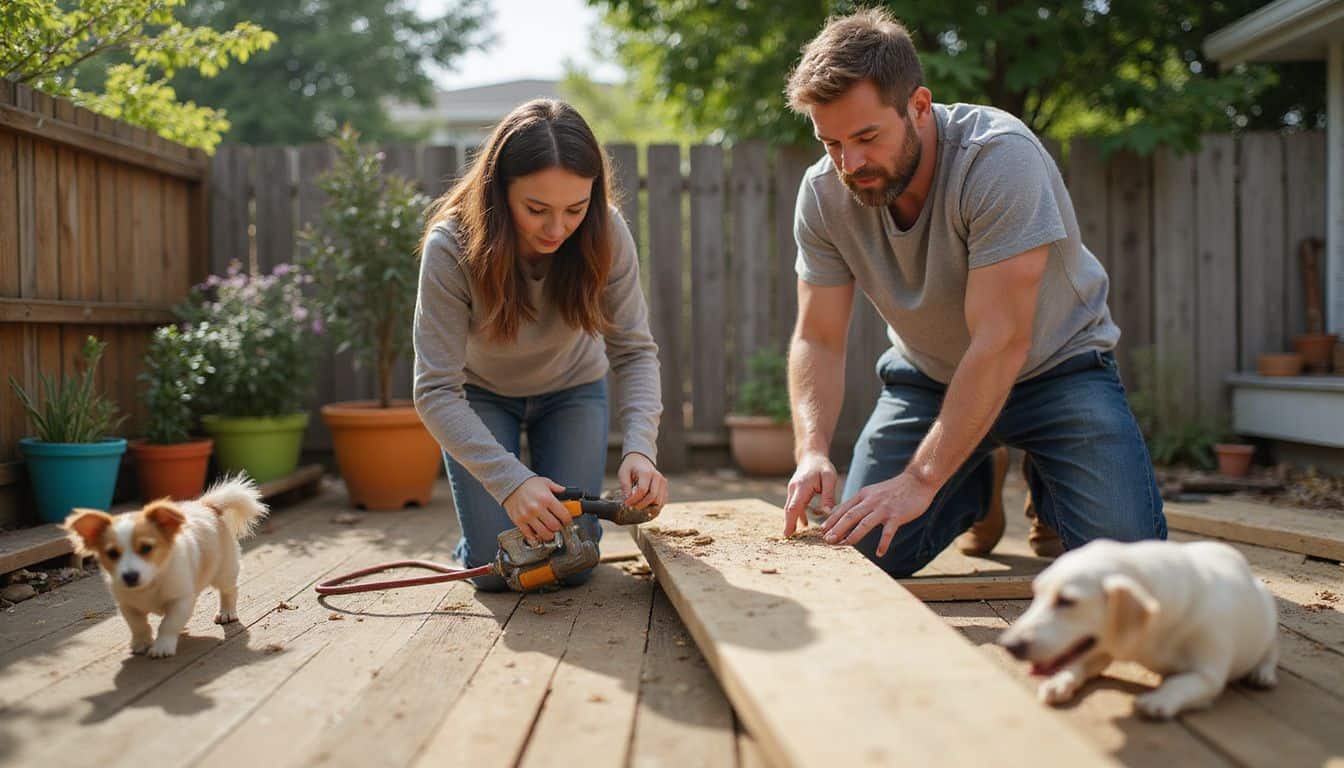
Weekend projects can transform your home in just two days. Try these fun upgrades that add both style and function to your living space.
Build a wooden bathtub tray
A wooden bathtub tray brings instant luxury to your self-care routine—and it only takes about an hour to build. Last month, I crafted one from leftover scrap wood; now, books, candles, even a relaxing glass of wine stay within easy reach during bath time.
Ideal wood types for this project include African Zebrawood, Mahogany, IPE, Teak, and Tigerwood. They’re all moisture-resistant, perfect for wet bathrooms. My own tray, made from Teak, has stayed in great shape through dozens of calming bubble baths.
Don’t skip the waterproof finish—it’s key. Options like oil, varnish blends, or polyurethane shield your tray from water, keeping it looking great for longer. You don’t need fancy equipment, either.
Just grab sandpaper, measuring tape, and a saw, and you’re all set.
Your new handmade tray quickly turns ordinary bath time into a cozy retreat. Mine conveniently holds everything from my tablet to a steaming cup of tea. Plus, the natural wood grain adds warmth and style that plastic store-bought trays simply lack.
Making one yourself costs way less, too, and you can customize it exactly to your bathtub dimensions.
You’ll feel proud to have built something helpful with your own two hands. Next up, we can explore creating a beautiful gallery wall to display your favorite art pieces and cherished photos.
Hang a gallery wall
A gallery wall can quickly transform your space in just about 30 minutes. All you need are basic tools: measuring tape, level, hammer, drill, and screwdriver. For even easier setup, I use wrapping paper printed with a grid pattern.
Just tape the paper to your wall, then mark spots where each frame will hang. After marking, drive nails into the wall or place drywall plugs to support heavier artwork. Doing this saved me from leaving unnecessary holes in my walls—it’s really handy!
Gather the pictures and art that mean something special to you, then arrange them into a layout you enjoy before hanging them up. Using the grid method helps keep frames evenly spaced and straight.
Your frames can reflect the personality and memories of your family and home. Last month, I mixed personal family snapshots with smaller artworks and prints for an extra cozy touch in our living room.
The nicest thing about creating a gallery wall is that it’s affordable yet completely changes how your room looks. Next up, here’s another easy weekend idea to refresh your home’s style and usefulness.
Install light fixtures or ceiling fans
Replacing outdated lights or installing ceiling fans can transform a room in just a couple hours. I found this out myself after updating the pendant lamps in my kitchen—the space felt completely refreshed! Just keep safety in mind, and always turn off the power at your breaker box before handling wires.
Most fixtures include easy-to-follow instructions; basic tools like wire cutters, screwdrivers, and pliers will do the trick. Simple home improvements like these boost style and practicality at the same time.
Good lighting is to a room what a frame is to a picture—it completes the space.
Next up, we’ll talk about sealing marble and porcelain surfaces, keeping your home looking clean and new for years.
Add wallpaper or wood paneling to a wall
Wallpaper can completely change your room’s look—in less than a day. Peel-and-stick options work great for newcomers since no special skills are needed. Costs are pretty low too, since self-adhesive wallpaper is cheaper than traditional kinds and uses fewer tools.
Many homeowners, especially women, enjoy seeing drastic changes from such simple projects—it feels really rewarding.
Wood paneling adds a cozy, inviting feel that paint can’t offer by itself. Installing paneling takes slightly longer than putting up wallpaper, but you can easily get it done over a weekend.
Modern styles range from classic beadboard to trendy shiplap—perfect for farmhouse, contemporary, or other home designs. Wood panels can refresh living room walls, bedroom spaces, or even bathrooms as an accent—without expensive remodels or needing professional help.
Maintenance and Home Improvement DIYs
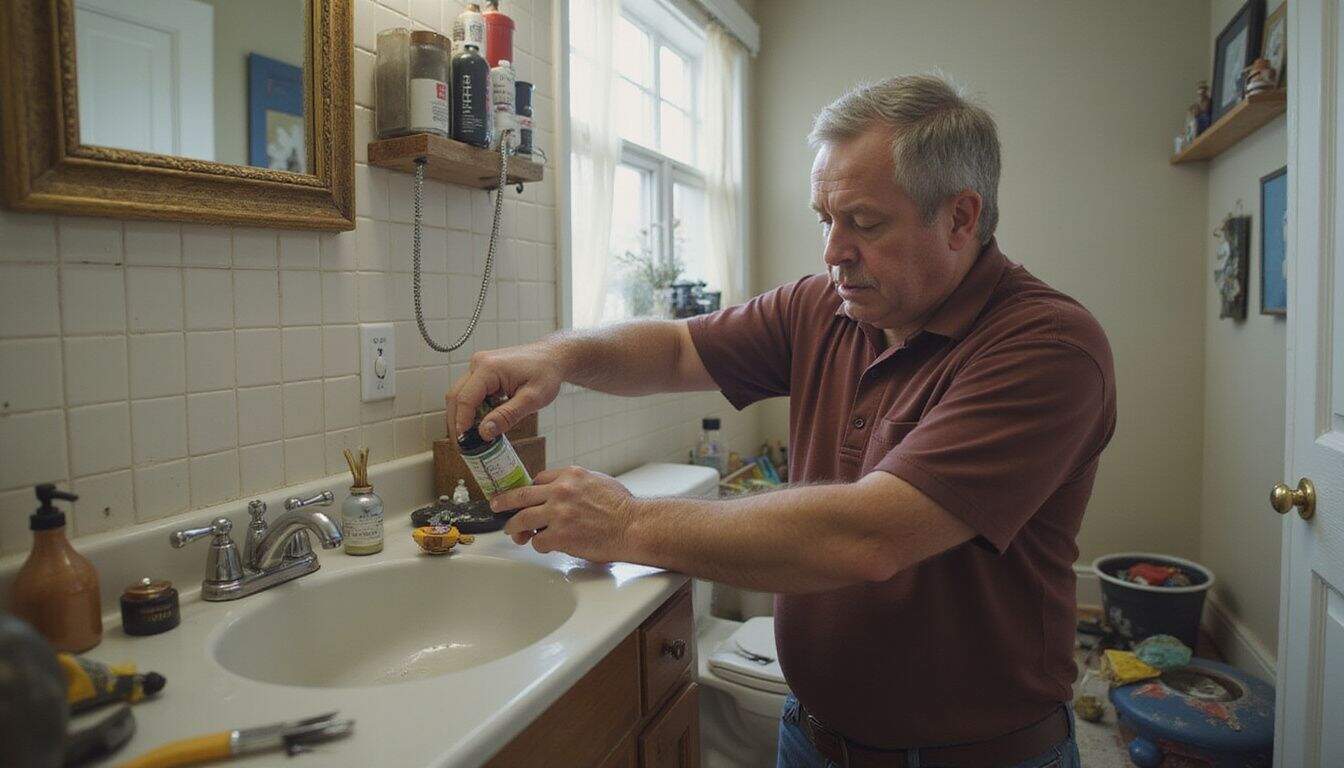
These simple maintenance projects can save you money and boost your home’s value, so grab your tools and learn how to fix common issues around the house!
Seal marble or porcelain surfaces
Marble and porcelain add charm and elegance to your home—but keeping them beautiful takes a little care. Sealing these surfaces only takes about five minutes to an hour, and it greatly increases their durability by forming an effective, protective layer.
Just grab a good-quality sealer from your nearby home improvement store, a clean cloth, and some rubber gloves—that’s really all you need. The steps could not be simpler: clean the surface thoroughly, spread the sealer lightly on small areas, wait the recommended time shown on your product’s label, and softly wipe off any leftover residue.
Doing this easy task can save you lots of money down the road, since it stops stains and damage before they even start—helping you avoid costly replacements. Many people squeeze this small project into a casual weekday evening, as it’s quick, easy, and doesn’t require special tools or a huge amount of effort.
After sealing, marble counters and porcelain sinks will noticeably resist water spots and food stains far better than before. Your surfaces stay cleaner, fresher, and protected—even with everyday use.
Fix a leaky faucet
A leaky faucet wastes your money and precious water—drop by drop! Luckily, you can handle this yourself, with just simple tools you already own: vice grips, channel-lock pliers, and a screwdriver.
First step is easy: turn off the water valve beneath your sink. Then, remove the faucet handle carefully using your screwdriver. Check the inside parts; worn washers or old cartridges typically cause leaks.
These parts wear down over time and are simple, inexpensive fixes.
I repaired my own kitchen faucet a month ago—I spent under $10 for replacement parts. The whole repair took me less than half an hour and knocked about $20 off my next water bill.
Home repairs may seem tricky at first glance, but this small fix gives immediate satisfaction. Your sink goes quiet, your wallet stays fuller, and you’ll feel great about your home repair skills.
Forget scrolling through online help—everything you need is right there in the toolbox.
Refresh caulking around sinks or bathtubs
Fresh caulk keeps your bathroom tidy and prevents costly water damage. Old cracked caulk lets moisture slip behind tiles and fixtures, creating ideal conditions for mold to thrive.
Tackling this simple project yourself could save you $100 to $500 compared to hiring professional help—money you can easily spend elsewhere. You’ll just need a few basic tools: a caulk gun, scraper, putty knife, caulk remover, and mold-resistant sealant.
According to most women who tackle it, this job typically takes only a few hours yet protects your home for years. Plus, whatever supplies you purchase can get reused for other household tasks—making this upgrade both convenient and budget-smart.
Looking ahead, technology and trends will soon reshape DIY home improvement even more. New tools and digital aids, like mobile apps and smart gadgets, will quickly simplify common household jobs.
Virtual demonstrations, helpful interactive guides, and machine-assisted tools can help beginners handle advanced repairs easily. Eco-friendly materials and energy-efficient products will become standard, making home improvements affordable and practical.
The DIY landscape is about to shift, becoming simpler, faster, and more accessible for casual homeowners.
How Will DIY Home Projects Evolve in 2025?

DIY home projects are shifting to short, single-day tasks by 2025. Busy homeowners prefer quick improvements—painting kitchen cabinets or switching out door handles are good examples.
People will lean into smart home upgrades too, installing keyless locks and smart thermostats without calling in professionals. Updating old light fixtures will also become a popular choice, especially for houses built in the 1990s that need a modern feel.
Of course, some things like laying tile or hanging drywall will still require professional help. Even so, many more DIY home projects will continue getting easier to handle without expert assistance.
Technology will really shape home improvement projects in 2025. New tools can make projects simple, even for beginners who don’t have much home repair experience. Busy people will still rely heavily on effective planning to squeeze in their projects around packed calendars.
The genuine pride and satisfaction once a project wraps up will keep motivating many women to take on DIY challenges. Seeing beautiful home improvements can inspire close friends and family members to tackle their own projects too.
Small changes, like swapping cabinet knobs or adding a coat of fresh paint, can completely refresh a room without costing a fortune.
People Also Ask
What simple DIY home projects can I start with if I’m a beginner?
You can begin by painting walls, swapping out old cabinet knobs, or installing new lighting. These beginner-friendly projects need only basic tools and easy-to-learn skills—perfect for quick wins and building confidence.
How much money should I budget for beginner DIY home upgrades?
Most beginner DIY home projects cost around $50 to $200, based on what materials you choose. Painting walls often comes cheap; replacing lighting or hardware usually costs a bit more. Add about 20% extra to your budget, just in case something pops up or you need additional supplies.
Can I complete these DIY projects without special tools?
Yes—most basic DIY tasks only require common household tools. Stuff like screwdrivers, a hammer, tape measure, and pliers will usually do the trick. Check out online tutorial videos to see exactly what’s required before you start.
How long do these beginner DIY projects typically take to finish?
Simple fixes often take only a couple hours or less. Painting a small room can usually be done over a weekend, while updating cabinet handles typically takes under an hour. Start with easy, quick projects to get comfortable, and then tackle bigger challenges as you go along.
References
https://www.classpop.com/magazine/diy-home-projects
https://www.theottohouse.com/blog/the-tools-you-need-to-get-started-with-diy (2024-05-10)
https://www.retirebetternow.com/blog/guide-to-easy-diy-home-improvement-projects/ (2023-12-13)
https://homeandtexture.com/beginner-diy-guide/
https://www.thespruce.com/do-it-yourself-paint-projects-8735145 (2024-11-13)
https://www.madebybarb.com/2023/09/15/how-to-create-easy-abstract-modern-art/ (2023-09-17)
https://ohhappyday.com/2011/07/how-to-make-abstract-art/ (2011-07-18)
https://www.nhcnow.com/blog/the-ultimate-diy-guide-to-replacing-cabinet-hardware/ (2025-04-10)
https://genzryan.com/blog/how-to-install-smart-thermostat/ (2024-10-15)
https://www.thisoldhouse.com/woodworking/88140/build-it-bathtub-tray
https://thediydreamer.com/diy/how-to-hang-a-gallery-wall/ (2022-10-12)
https://www.bhg.com/home-improvement/remodeling/budget-remodels/weekend-home-projects/ (2023-02-14)
https://opplehouse.com/diy-wall-paneling-made-simple-beginner-friendly-project/ (2025-03-26)
https://www.lowes.com/nl/diy-projects-and-ideas/articles
https://substack.com/home/post/p-157161227?utm_campaign=post&utm_medium=web
https://www.bankrate.com/homeownership/diy-home-projects-for-beginners/ (2022-03-22)
https://www.buzzfeed.com/elizabethlilly/quick-learner-diy-home-upgrades-2025 (2024-12-22)
